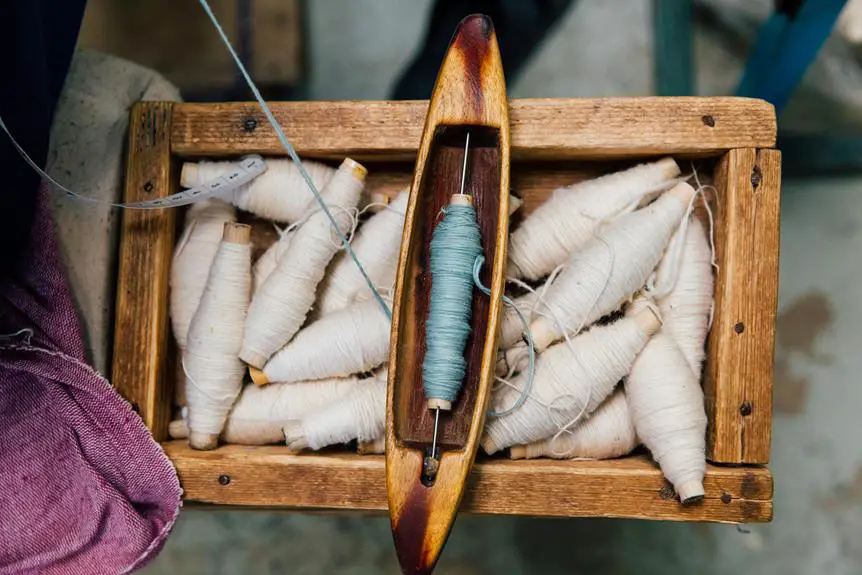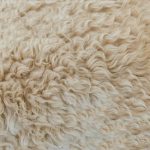When you think about Dotted Swiss fabric, you might wonder if it offers any stretch or flexibility. In its traditional form, you'll find that it's quite firm, primarily made from lightweight cotton, which doesn't lend itself to much give. However, there are modern variations that blend in stretchy materials like spandex or elastane, which can change the game entirely. Does this mean you can confidently use Dotted Swiss for all your garment needs? The answer might surprise you as you explore the nuances of its composition and potential applications.
Table of Contents
What Is Dotted Swiss Fabric?
Dotted Swiss fabric is a lightweight, cotton textile known for its delicate, embroidered polka dots, making it a popular choice for dresses and curtains. You'll likely appreciate its airy feel and charming appearance, which brings a touch of elegance to various garments and home decor. The distinct dotted pattern, often created through a unique weaving process, adds visual interest while maintaining a soft texture.
You can find Dotted Swiss fabric in a variety of colors, so it's easy to coordinate with your personal style or design preferences. It's often used in children's clothing, giving outfits a playful look, but don't underestimate its versatility. You can also dress up your windows with Dotted Swiss curtains that let in light while offering a bit of privacy.
When sewing with Dotted Swiss, you'll notice that its light weight allows for easy draping. However, you might want to consider using a lining for added structure, particularly in dresses. Overall, if you're looking to create whimsically chic items, Dotted Swiss fabric is a fantastic choice that combines practicality with charm.
Composition of Dotted Swiss
When exploring the composition of Dotted Swiss fabric, you'll want to understand its structure and the fibers used.
This knowledge not only reveals the fabric's qualities but also its potential stretch properties.
Let's break down each aspect to see how they contribute to the overall performance of Dotted Swiss.
Fabric Structure Overview
This unique fabric typically consists of a lightweight cotton blend that features a dotted pattern created by embroidery or weaving techniques.
The structure of Dotted Swiss fabric is what gives it its distinct charm and versatility. You'll notice the fabric's sheer quality, which makes it ideal for layering. The dots often stand out against the base material, adding a playful texture that enhances any garment.
When you touch Dotted Swiss, you'll feel its soft, breathable nature, making it perfect for warm-weather clothing. Its lightweight profile also allows for easy draping, resulting in a flowing look that flatters various body types.
The intricate patterns are achieved by either embroidering the dots onto the fabric or incorporating them during the weaving process, leading to a harmonious blend of texture and design.
Because it's usually made from a cotton blend, this fabric is easy to care for. It typically withstands regular washing and maintains its integrity over time. This means you can enjoy its stylish appeal without worrying too much about upkeep.
In essence, the structure of Dotted Swiss fabric combines aesthetic charm with practical functionality, making it a great choice for numerous applications.
Fiber Content Analysis
Understanding the fiber content of Dotted Swiss fabric reveals how its quality and characteristics enhance its appeal and functionality in various applications.
Typically, Dotted Swiss is made from cotton, polyester, or blends of both, allowing it to maintain a light, airy feel. Cotton gives you breathability and softness, making it comfortable against the skin—ideal for garments like dresses and blouses. On the other hand, polyester adds durability and easy-care benefits, resisting wrinkling and shrinking.
You might find that some Dotted Swiss fabrics incorporate a bit of spandex or elastane. These additions provide a slight stretch, enhancing comfort and fit without compromising the fabric's unique texture. This blend ensures you enjoy the delicate dot pattern while benefiting from a flexible, easy-to-wear garment.
When choosing Dotted Swiss, consider the fiber content carefully. Higher cotton content delivers a more natural feel, while higher polyester may improve longevity and maintenance.
Depending on your intended use—be it casual wear, children's clothing, or home decor—understanding this composition helps you make the right choice for your project.
Stretch Properties Explained
Dotted Swiss fabric can exhibit varying levels of stretch, depending on its composition and whether it includes materials like spandex or elastane. Typically, Dotted Swiss is made from cotton or polyester, which, on their own, don't provide much stretch.
When blended with stretchy fibers, however, you'll notice a significant difference in flexibility and comfort. If you're making clothing or home textiles, look for Dotted Swiss variations that incorporate elastane.
This blend will offer the best of both worlds: the classic aesthetic of Dotted Swiss, along with a snug fit and ease of movement. When you choose a stretchier variant, you can enjoy a more fitted silhouette without sacrificing style.
For projects requiring comfort and flexibility, like fitted dresses or activewear, selecting a stretchy Dotted Swiss is key. Remember, the higher the percentage of spandex or elastane, the greater the stretch properties.
Elasticity and Stretch Characteristics
When you consider the elasticity and stretch characteristics of Dotted Swiss fabric, you'll find it typically has limited stretch, designed more for structure than flexibility. This characteristic is a defining aspect of its overall performance and application.
When you're handling this fabric, you'll notice that it doesn't cling or contour to the body too tightly, giving it a more structured appearance. The fibers are woven in a way that sacrifices some elasticity for stability, making it ideal for garments that require a more tailored fit.
If you're looking to use Dotted Swiss for skirts, blouses, or lightweight dresses, you'll appreciate its crispness and the way it holds its shape, avoiding excessive draping or sagging.
However, it's essential to consider how this limited stretch affects comfort and movement. While it's great for achieving a specific silhouette, you may want to pair it with fabrics that have higher elasticity if you're aiming for easier mobility.
Comparing Dotted Swiss to Other Fabrics
Comparing Dotted Swiss to other fabrics reveals how its crisp structure and minimal stretch set it apart, making it a preferred choice for specific styles and designs.
When you look at cotton, for instance, it often has more natural stretch and softness, which lends itself well to comfortable everyday wear. In contrast, Dotted Swiss offers a stiffer feel, creating that distinct textured appearance.
When you think about organza, it might share a similar lightweight quality, but the translucence of organza typically results in a more delicate look. Dotted Swiss, with its subtle texture, doesn't always yield that ethereal effect, giving it more structure.
You'll also find that polyester blends often provide more elasticity, making them better suited for activewear or form-fitting clothing.
In terms of versatility, Dotted Swiss holds its own, especially in more structured garments like blouses or dresses where you want a bit of flair without compromising shape.
Its unique characteristics mean it stands out in a world of fabrics, ensuring it has a distinct identity that contributes to its popularity in special projects like children's clothing or elegant formal wear.
Best Uses for Dotted Swiss
One of the best uses for Dotted Swiss is in creating stylish blouses that maintain a charming structure while adding a touch of whimsy. This fabric's unique texture makes it perfect for layering, allowing you to pair it with a simple cami or tank top underneath. You'll love how it flows, giving your outfit an airy feel, especially during warmer months.
You can also use Dotted Swiss for adorable dresses, especially for kids. The playful polka dots can brighten up any little one's wardrobe, making it a delightful choice for parties and casual outings alike.
For home decor, consider Dotted Swiss curtains. They provide privacy while letting in soft light, enhancing any room's atmosphere. Plus, using Dotted Swiss for tablecloths or napkins adds a charming, festive touch to gatherings.
If you're feeling crafty, you might even think about using Dotted Swiss for accessories, like hair bows or headbands. This fabric offers versatility and character, allowing you to showcase your creativity. Whatever project you choose, Dotted Swiss fabric is sure to bring a unique flair that stands out.
Care Instructions for Dotted Swiss Fabric
Dotted Swiss fabric requires gentle care to keep its delicate texture and whimsical pattern looking fresh.
When it comes to washing, it's best to hand wash or use a gentle cycle in cold water. Always opt for a mild detergent to prevent any harsh chemicals from damaging the fabric. If you choose to machine wash, consider placing the fabric in a mesh laundry bag for extra protection.
Avoid bleach, as it can ruin the fabric's color and texture. After washing, don't wring or twist the fabric—simply press out excess water gently. Lay it flat on a clean, dry towel to air dry; resist the temptation to use a dryer, as the heat can harm the fibers.
When it's time to iron, make sure your iron is set to a low temperature. Ironing the fabric while it's still slightly damp helps smooth out wrinkles without compromising its texture.
If you need to store Dotted Swiss fabric, keep it in a cool, dry place away from direct sunlight to prevent fading.
Frequently Asked Questions
Can Dotted Swiss Fabric Be Used for Formal Wear?
Yes, you can absolutely use dotted Swiss fabric for formal wear. Its delicate texture and unique design add a charming touch to dresses, blouses, or overlays, making your outfit stand out elegantly at any special event.
Is Dotted Swiss Fabric Environmentally Friendly?
Dotted Swiss fabric's environmental impact depends on its materials. If you choose organic cotton or sustainable fibers, it can be an eco-friendly option. Always check the label to ensure you're making environmentally conscious choices.
How Do I Know if My Dotted Swiss Is Genuine?
To determine if your dotted Swiss is genuine, check the fabric's texture and weight. Authentic dotted Swiss has a soft, lightweight feel, with evenly spaced dots. Look for brand labels or certification for extra assurance.
What Colors Are Commonly Available for Dotted Swiss Fabric?
You'll commonly find dotted swiss fabric in colors like white, cream, pastels, and vibrant shades. These versatile hues make it perfect for various projects, adding a charming touch to garments and home decor alike.
Can Dotted Swiss Fabric Be Dyed or Printed On?
Yes, you can dye or print on dotted Swiss fabric. Just choose the right dye for its fiber content. Ensure you follow the manufacturer's instructions for best results, and always test on a small section first.
- How Does Ring Spun Cotton Affect Garment Fit and Shape Retention? - August 13, 2024
- What Are the Challenges in Producing Ring Spun Cotton? - August 13, 2024
- Is Ring Spun Cotton Suitable for Plus-Size Clothing? - August 13, 2024







